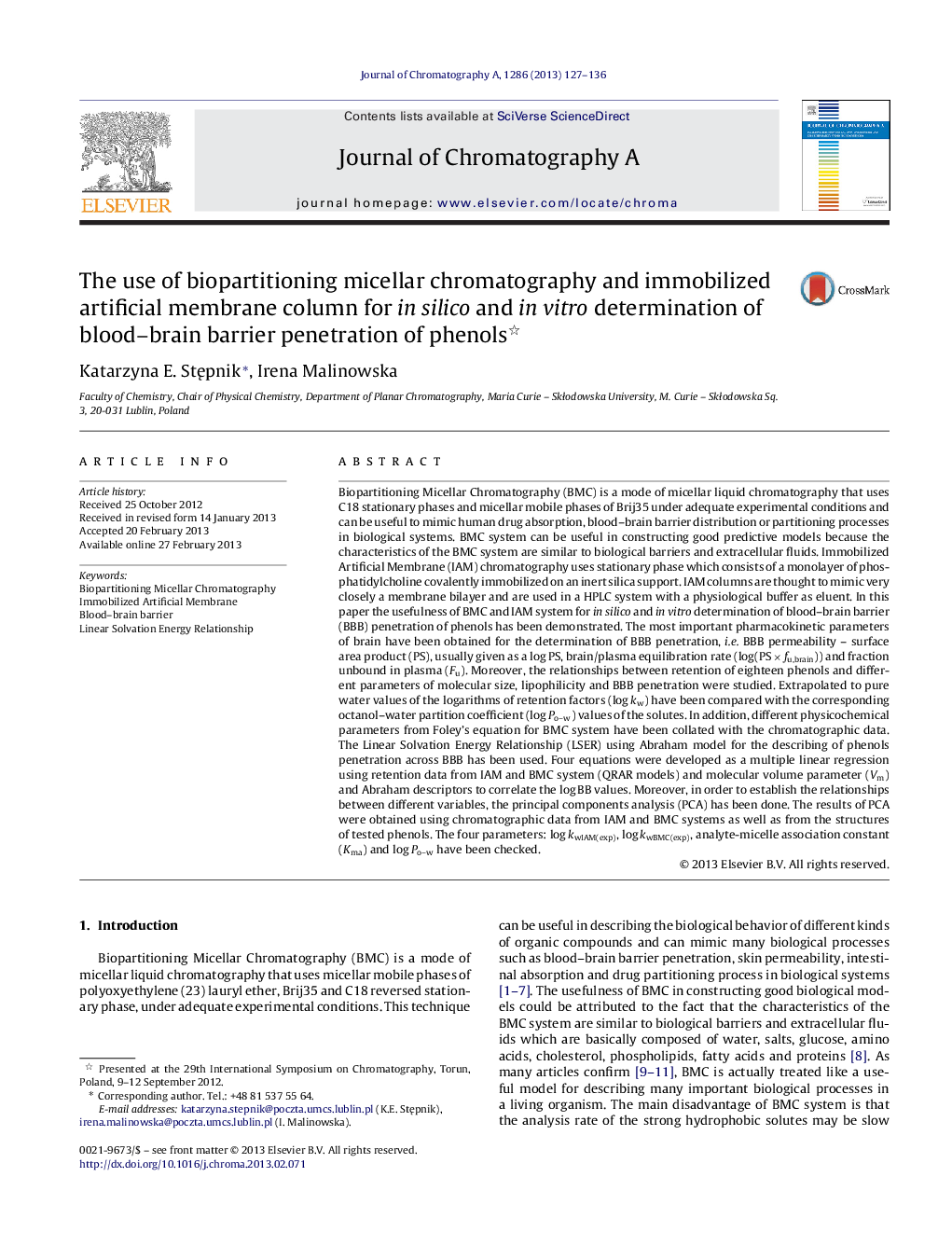| کد مقاله | کد نشریه | سال انتشار | مقاله انگلیسی | نسخه تمام متن |
|---|---|---|---|---|
| 1204142 | 1493640 | 2013 | 10 صفحه PDF | دانلود رایگان |

Biopartitioning Micellar Chromatography (BMC) is a mode of micellar liquid chromatography that uses C18 stationary phases and micellar mobile phases of Brij35 under adequate experimental conditions and can be useful to mimic human drug absorption, blood–brain barrier distribution or partitioning processes in biological systems. BMC system can be useful in constructing good predictive models because the characteristics of the BMC system are similar to biological barriers and extracellular fluids. Immobilized Artificial Membrane (IAM) chromatography uses stationary phase which consists of a monolayer of phosphatidylcholine covalently immobilized on an inert silica support. IAM columns are thought to mimic very closely a membrane bilayer and are used in a HPLC system with a physiological buffer as eluent. In this paper the usefulness of BMC and IAM system for in silico and in vitro determination of blood–brain barrier (BBB) penetration of phenols has been demonstrated. The most important pharmacokinetic parameters of brain have been obtained for the determination of BBB penetration, i.e. BBB permeability – surface area product (PS), usually given as a log PS, brain/plasma equilibration rate (log(PS × fu,brain)) and fraction unbound in plasma (Fu). Moreover, the relationships between retention of eighteen phenols and different parameters of molecular size, lipophilicity and BBB penetration were studied. Extrapolated to pure water values of the logarithms of retention factors (log kw) have been compared with the corresponding octanol–water partition coefficient (log Po–w) values of the solutes. In addition, different physicochemical parameters from Foley's equation for BMC system have been collated with the chromatographic data. The Linear Solvation Energy Relationship (LSER) using Abraham model for the describing of phenols penetration across BBB has been used. Four equations were developed as a multiple linear regression using retention data from IAM and BMC system (QRAR models) and molecular volume parameter (Vm) and Abraham descriptors to correlate the log BB values. Moreover, in order to establish the relationships between different variables, the principal components analysis (PCA) has been done. The results of PCA were obtained using chromatographic data from IAM and BMC systems as well as from the structures of tested phenols. The four parameters: log kwIAM(exp), log kwBMC(exp), analyte-micelle association constant (Kma) and log Po–w have been checked.
► IAM chromatographic retention.
► BMC chromatographic retention.
► Comparison between BMC and IAM chromatographic parameters.
► The LSER of Abraham in the prediction of BBB penetration using BMC and IAM chromatographic systems.
Journal: Journal of Chromatography A - Volume 1286, 19 April 2013, Pages 127–136